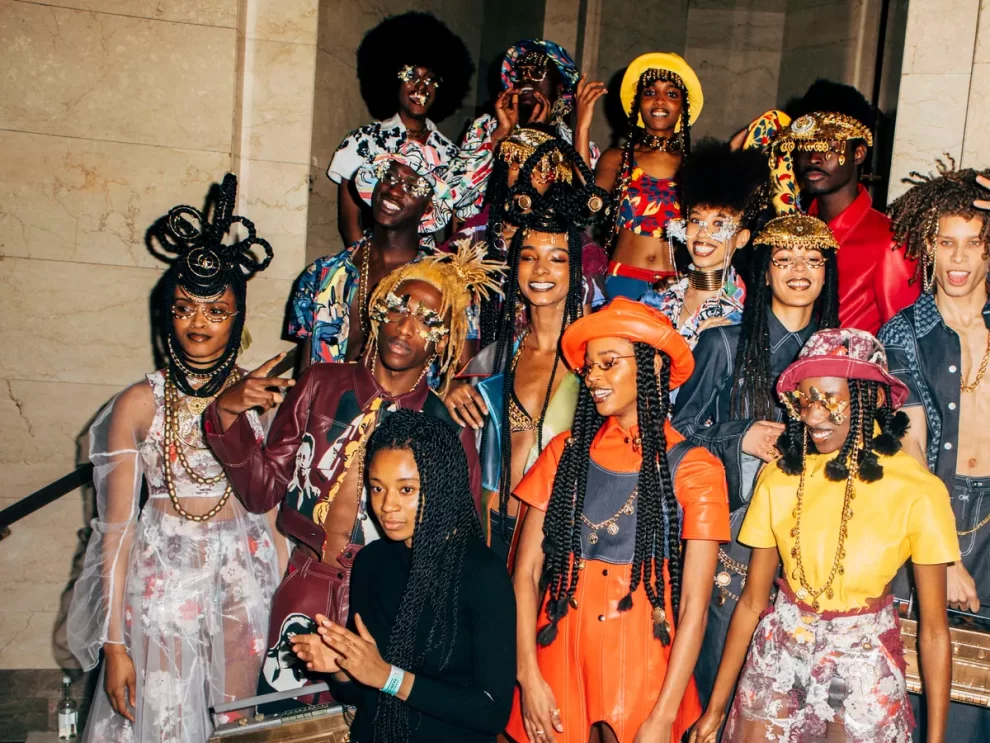The death in November of Virgil Abloh, the Black designer lauded for his success heading menswear at Louis Vuitton, highlighted how few artistic voices there are in Europe from minority backgrounds — Olivier Rousteing, the Balmain designer, and Rhuigi Villasenor at Switzerland’s Bally are some of the notable few.
Now, the very first report on the industry’s diversity in Europe shows how deep that under-representation goes in other key roles. The report last week by the British Fashion Council shows women hold under half of senior posts even though they account for the lion’s share of the industry’s consumers. Leaders of ethnic minority backgrounds make up just 9% of top management positions at the 100 companies surveyed.
“Black lives matter was the most recent instigator to us all in terms of diversity, and I think truthfully, you know, progress is being made,” Jamie Gill, chairman of the BFC D&I Steering Committee and CEO of fashion brand Roksanda, said at a conference last week. “But it’s just not enough. It’s just not urgent enough.”
The Diversity and Inclusion in the Fashion Industry report is the first of its kind to offer such data in Europe. In March 2021, the British Retail Consortium’s first diversity report showed Black or other minority leaders made up just 4.5% of boards and 5.8% of executive committees, while accounting for 12.5% of the population.
On the continent, numbers at some of the biggest fashion houses aren’t pretty. In 2016, French luxury group LVMH Moet Hennessy Louis Vuitton SE — best known for brands such as Christian Dior and Givenchy — had one woman on its executive board. That’s gone up to two out of 14. At Kering, owner of the Gucci brand, the proportion of women on the executive committee has not budged from 33% in a while. The two companies didn’t immediately respond to requests for comments.
That said, the proportion of women in managerial positions at Kering was 56% last year, according to its annual report, and it ranked 9th out of 11,000 global companies in a diversity index by Refinitiv. At LVMH, that proportion was 65% for executive and manager roles, its report said.
According to the report, only 51% of businesses surveyed had a D&I strategy. A 1978 law in France and the European Union’s GDPR regulation are cited as reasons why fashion brands cannot divulge race and other personal information about employees.
In Britain, fashion brand Burberry’s global head of diversity, Geoffrey Williams, says the company plans to increase ethnic diversity in the UK and US to 25% and is aiming for a 50-50 gender split by 2025. That may be a tall order given only 1.6% of its employees in the UK are Black and women make up 27% of its executive committee.
Fashion companies face pressure from consumers, particularly younger ones, on diversity and sustainability. According to data compiled by Deutsche Bank, in the second half of 2021, such considerations ranked 10th in global luxury purchases, but fifth among 18-34 year-olds. Gen Z consumers are expected to represent about 50% of demand in 2025.
“This is a highly global industry, with a global, diverse consumer base,’’ says Anita Balchadani, Senior Partner at McKinsey & Company. “And that’s what sets the scene for the imperative for the industry to be equally as diverse.”
By the numbers
- 14%That is the amount of women that reply on birth control through a pill, according to the CDC. It is the most popular method with those aged between 15-49 years old.
Source: Bloomberg




























